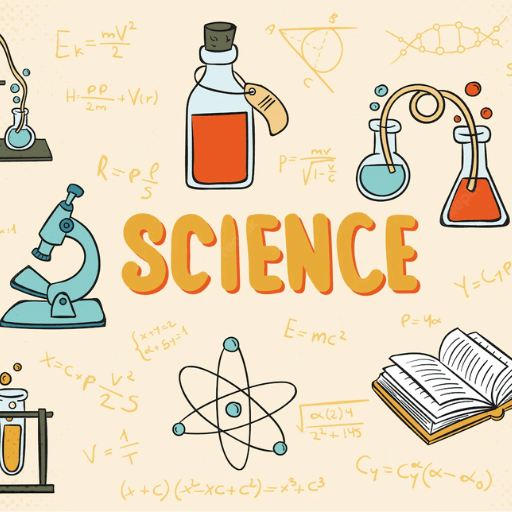Tissues Class 9 Notes Science Chapter 6
Tissues
A group of cells having a common origin and performing similar function are termed as tissues.
Plant Tissues
On the basis of the dividing capacity, plant tissues are of two types:
1. Meristematic Tissues
Consist of actively-dividing cells. Meristematic tissues are of three types:
 (i) Apical meristem: Present at the growing tips of stems and roots.
(i) Apical meristem: Present at the growing tips of stems and roots.
Important function: To increase the length of stems and roots.
(ii) Intercalary meristem:Present at the base of leaves or near the nodes.
Important function: For the longitudinal growth of plants.
(iii) Lateral meristem: Present on the lateral sides of the stems and roots.
Important function:To increase the thickness of stems and roots.
2. Permanent Tissues
Formed from meristematic tissues, the cells in the tissue loose the ability to divide.
Permanent tissues are divided into two categories:
(i) Simple permanent tissue: Consist of only one type of cells.
Types of simple permanent tissues:
(a) Parenchyma:Composed of unspecialised cells with relatively thin cell walls, large intercellular space, present in soft parts of the plant. Their main function is storage.
(b) Collenchyma:Composed of living and elongated cells with cell walls and irregularly thickened at the corners. Very little intercellular space. It provides mechanical support and elasticity to plant. It helps in bending of leaves and stems.
(c) Sclerenchyma: Composed of long, narrow, and thick-walled cells. This tissue is made up of dead cells and there are no intercellular spaces. Sclerenchyma cells are dead, present in seeds, nuts, husk of coconut, fibres of jute, etc.
(ii) Complex Permanent Tissue
Made up of more than one type of cells (Conducting tissues).
Types of complex permanent tissues:
(a) Xylem:Conducts water and minerals from the roots to the different parts of the plant.
Composed of four different types of cells—tracheids, vessels, xylem parenchyma and xylem fibres.
(b) Phloem:Conducts food material from the leaves to the different parts of the plant.
Composed of four different types of cells—sieve tubes, companion cells, phloem parenchyma and phloem fibres.
Protective Tissue
It is made of a single layer of cells. E.g., epidermis. Epidermis of the leaf bears stomata.
Animal Tissues
Animal tissues are classified into four types based on the functions they perform:
(i) Epithelial
(ii) Connective
(iii) Muscular
(iv) Nervous
 |
Download the notes
Short Notes - Tissues
|
Download as PDF |
(i) Epithelial Tissues
Form the covering of the external surfaces, internal cavities and organs of the animal body.
Various types of epithelial tissues are:
(a) Simple squamous epithelium:Single layer of flat cells.
Location in the human body: Lining of the mouth, oesophagus, lung, alveoli, etc
(b) Cuboidal epithelium:Consists of cube like cells. Location in the human body: Lining of the kidney tubules and ducts of the salivary glands. It’s function is secretion and absorption. It provides mechanical support.
(c) Columnar epithelium: Consists of elongated or column-like cells.
Location in the human body: Inner lining of the intestine and gut. Its function is of secretion and absorption.
(ii) Connective Tissues
Specialised to connect various body organs.
Various types of connective tissues are:
(a) Areolar tissue: Found between the skin and muscles, around the blood vessels and nerves, etc.
(b) Adipose tissue: Acts as the storage site of fats; found between the internal organs and below the skin; acts as an insulator for the body.
(c) Dense regular connective tissue: Main components are tendons and ligaments; tendons connect muscles to bones, while ligaments connect two bones together.
(d) Skeletal tissue:Main components of skeletal tissues are cartilage and bone.
(e) Fluid tissue: Blood is the vascular tissue present in animals.
(iii) Muscular Tissues
Main function of muscular tissues is to provide movement to the body.
Muscular tissues are of three types:
(a) Striated muscles or skeletal muscles or voluntary muscles:Cells are cylindrical, unbranched and multinucleated.
(b) Smooth muscles or involuntary muscles: Cells are long, spindle-shaped and possess a single nucleus.
(c) Cardiac muscles or involuntary muscles:Cells are cylindrical, branched and uninucleated.
(iv) Nervous Tissues
Present in the brain, spinal cord and nerves.
(a) Neuron:Cells of the nervous tissue.
(b) A neuron consists of a cell body, an axon and a dendrite.
|
84 videos|394 docs|61 tests
|
FAQs on Tissues Class 9 Notes Science Chapter 6
| 1. What are the main types of plant tissues? |  |
| 2. What is the function of xylem in plants? |  |
| 3. How are animal tissues classified? |  |
| 4. What are the different types of epithelial tissues? |  |
| 5. What is the role of connective tissue in animals? |  |

































